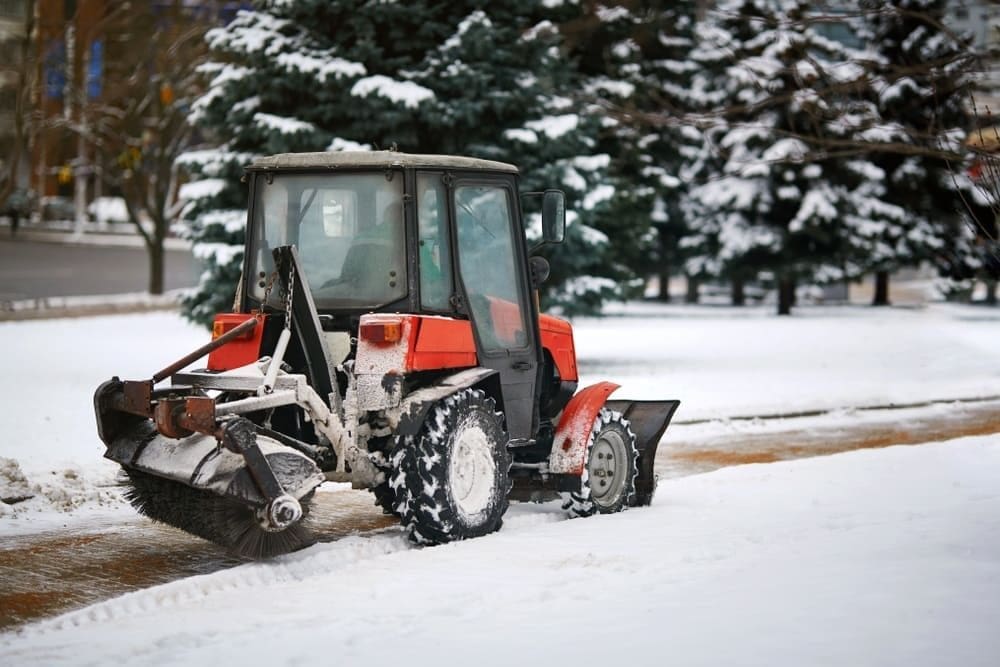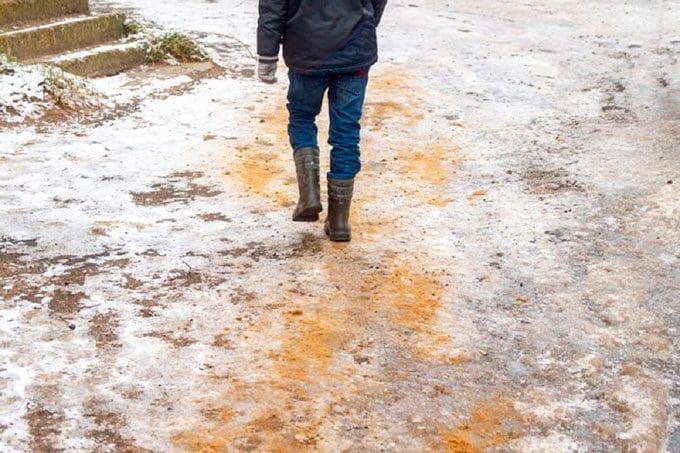Sand has long been used on roads, car parks, and other outdoor spaces affected by cold weather. It’s a common go-to method for ensuring that people can walk more easily on slippery surfaces and because it is so commonly used, it leaves people wondering…does sand melt ice? Does sand melt ice faster? And is sand good for melting ice?
The simple, and perhaps confusing, answer is no. Sand doesn’t melt ice. In fact, it doesn’t really affect ice in any significant way at all. It is used, however, for its ability to create friction and make surfaces less slippery.
In comparison to salt, which is used specifically for melting ice, sand is not able to lower the freezing temperature of water. Regular salt allows water to remain in a liquid state at a lower temperature, which is why frozen water in the Arctic is still often…water. Salt is a powerful and effective way of melting ice and is often used as both a treatment and a preventative measure. Sand, however, offers its own unique benefits and at Earth Development, we offer this as part of a wider de-icing service for our commercial clients.
So… Why Use Sand on Ice?
Sand is an effective way of making it safer to walk on slippery ground. Sometimes when a company hasn’t taken the necessary preventative measures to reduce the impact that ice can have on an outdoor pavement or car park, sand provides a quick and simple solution that works until the ice melts naturally.

By applying a layer of sand over slippery surfaces, pedestrians and vehicles can get a better grip on the ice. It reduces the chances of accidents significantly, and it will also help reduce the chances of yet more water freezing on the surface.
While the answer to “will sand melt ice?” is no, sand does make it possible to keep the top layer of the ice warmer through friction. As more tires and feet walk over the sandy surface during the day, that friction generates warmth, keeps the water moving, and makes it harder for it to freeze over once again even when outside reaches freezing temperatures.
And, while sand doesn’t really melt ice very well, it does absorb the heat of the sun. That keeps the top layer of the ice from freezing any further. So, even as a last-minute option when your car park or pavement freezes over, sand can help make sure it doesn’t get much worse…that is, unless you have a night of snowfall!

Are There Other Options?
So, does sand melt ice faster than salt? No. But we think it’s important for businesses to consider this option when preparing for customers to visit their property on wintery days.
For businesses looking to prepare for snowfall and ice formation, however, there are lots of other options ranging from salt and liquid de-icing to snow removal and plowing.
Road sanding is often performed immediately following snow removal to ensure the surface left behind is grippy and safe to use, but at Earth Development we’re always happy to discuss the right options for you. This may involve commercial ice control that involves regular, pre-scheduled treatments during the coldest months of the year, emergency snow removal services, or entryway snow shoveling.
Find Out More About Sanding and Get a Free Quote!
Want to find out more about road sanding services in Wisconsin, Ohio, Minnesota, Indiana, or Iowa? The Earth Development team boasts years of experience in the industry, and we’ll always help you decide which option is best for you.
We use only the highest quality materials, the most reliable equipment, and dispatch a professional, experienced, and reliable team who always gets the job done to the highest standard every time.
For more information, feel free to chat with one of our friendly team members online, or give us a call at (866) 945-4927 and get a free quote today!
